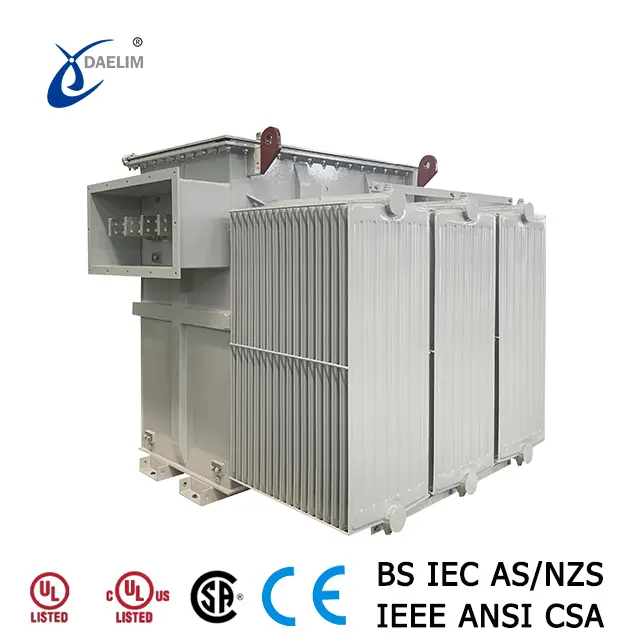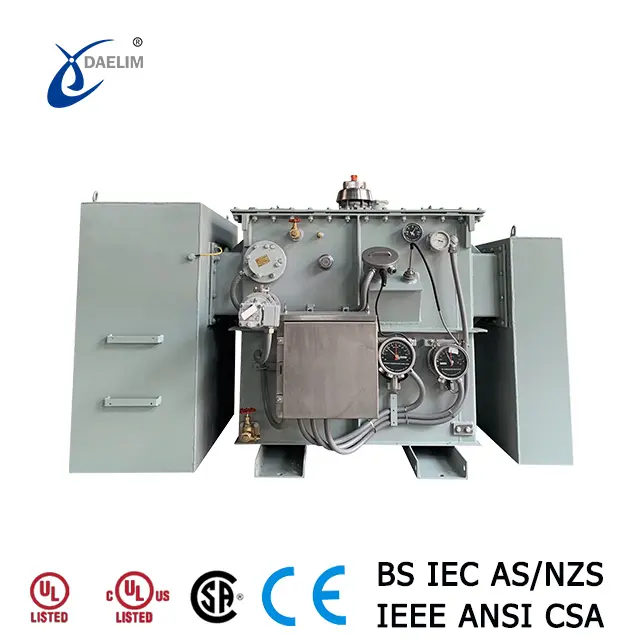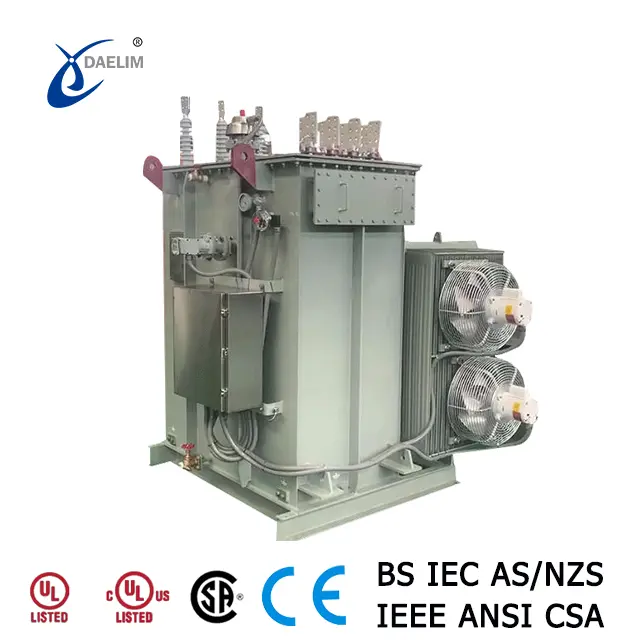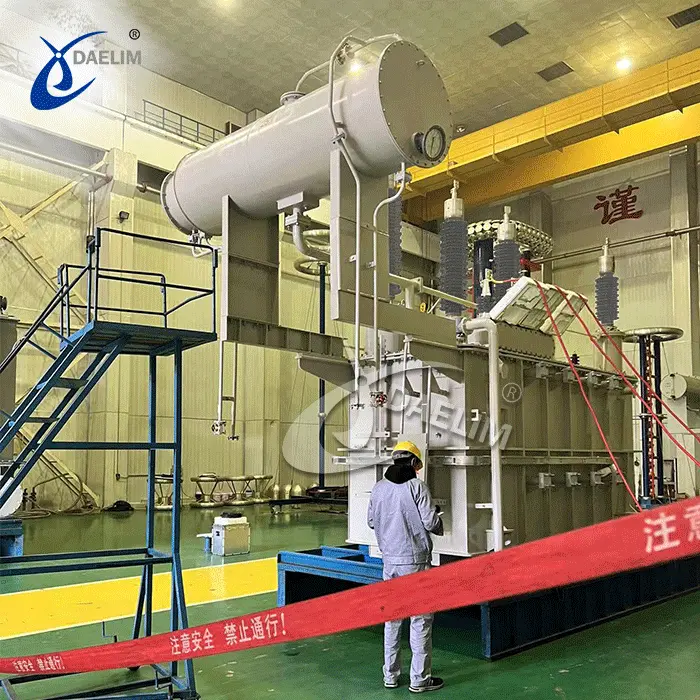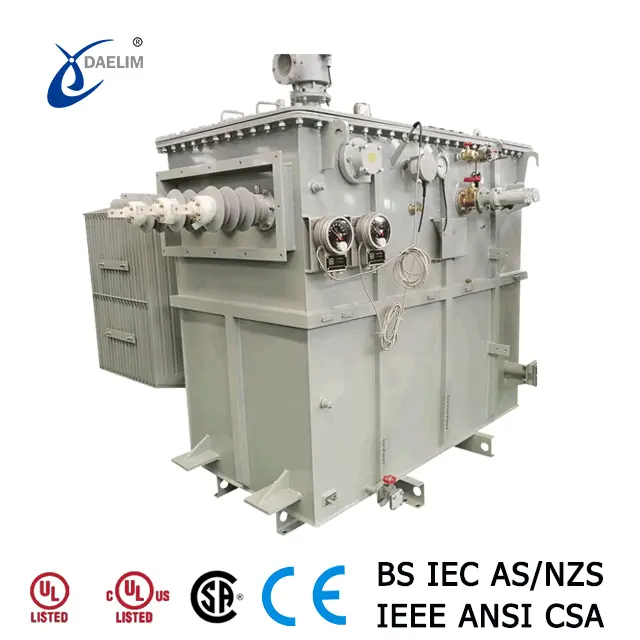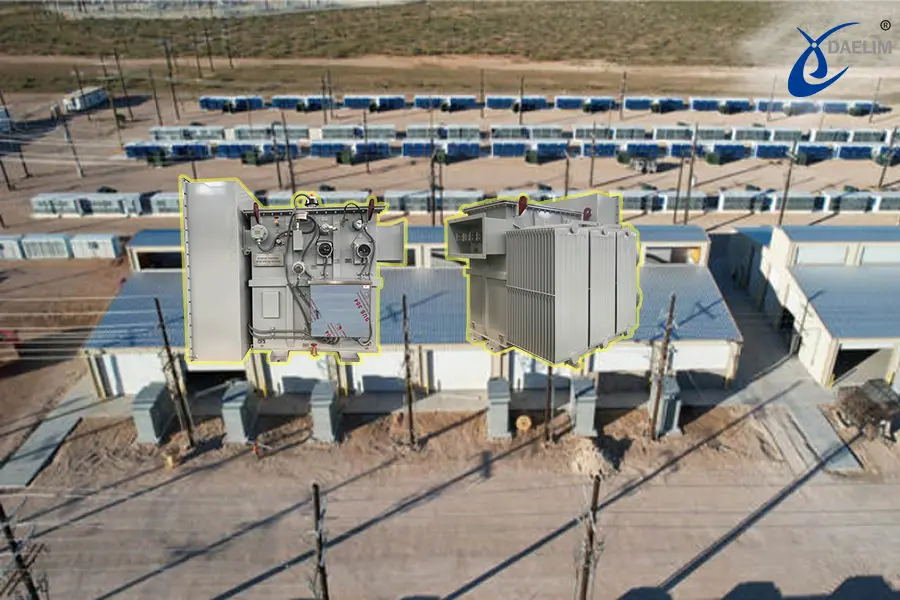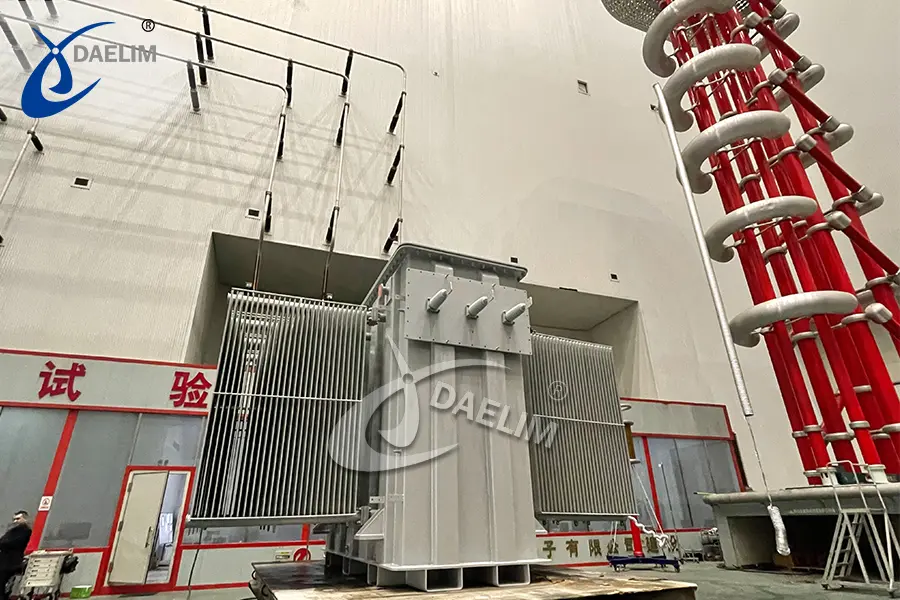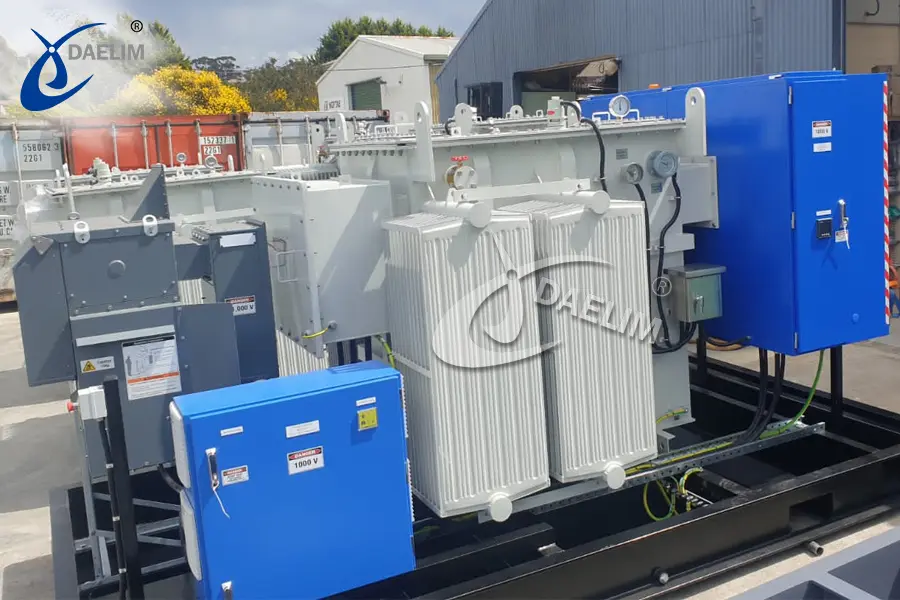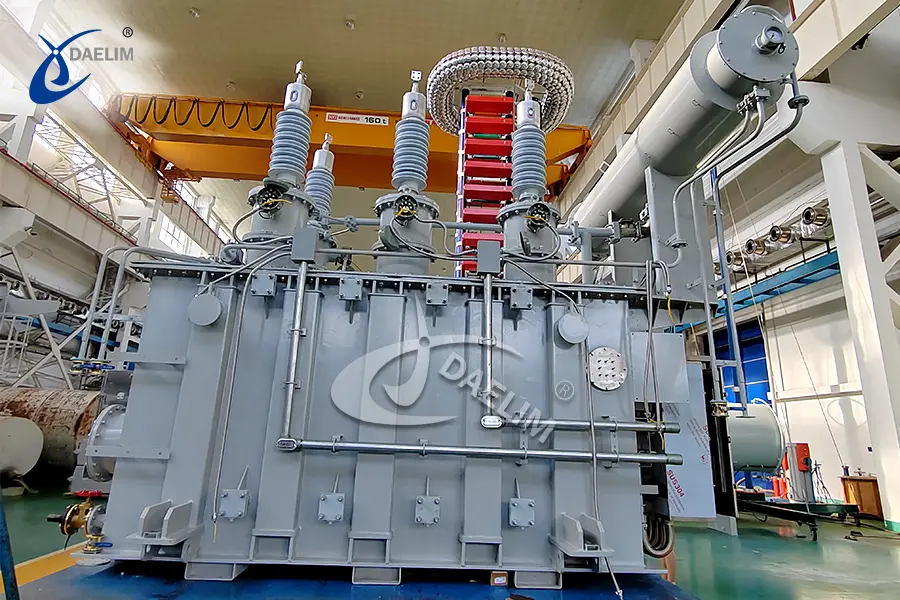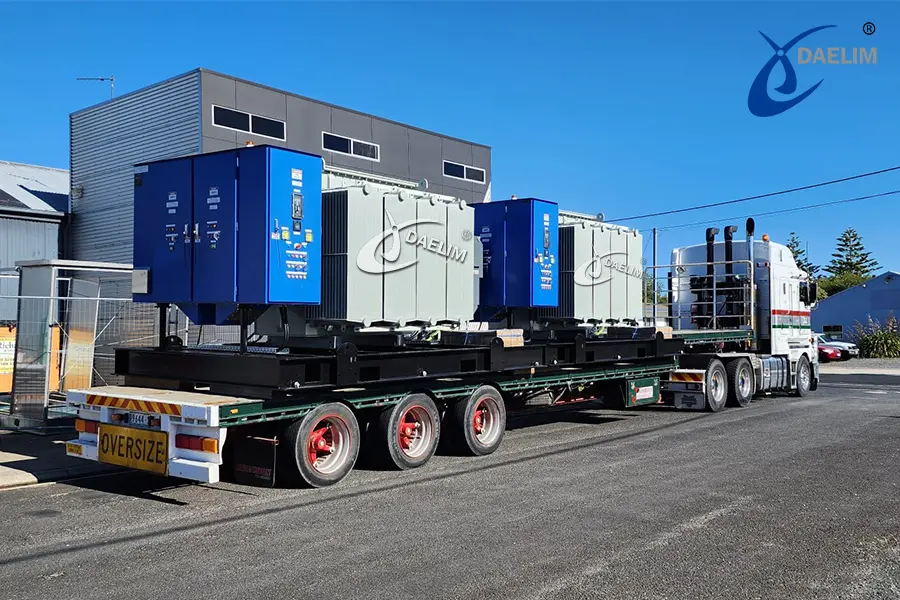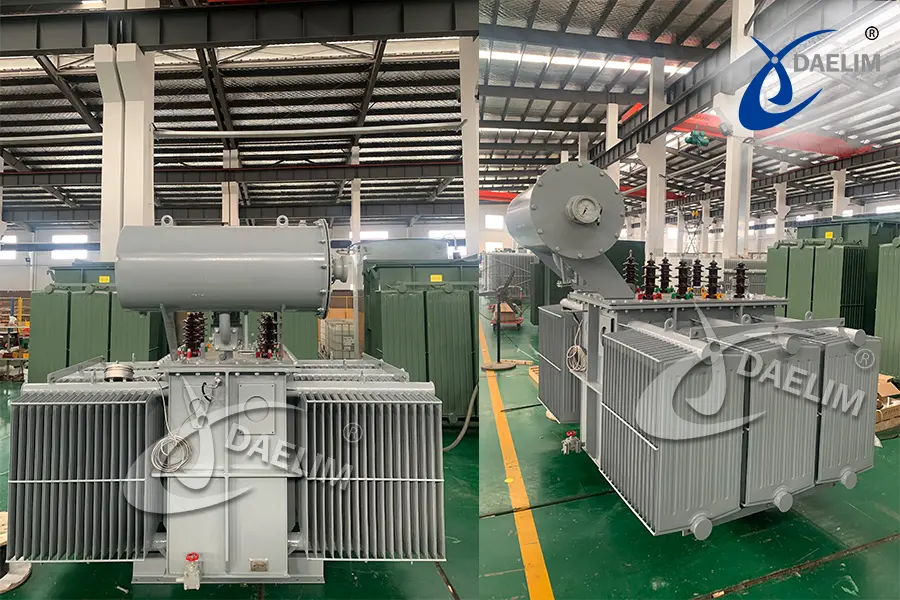Why Substation Transformers Are So Important In Power System?

The substation transformer is a widely utilized electrical transformer in North America. Known for its compact structure and versatile design, this transformer can cater to diverse industrial, commercial, and residential power requirements, finding extensive applications across various sectors in the North American market.Substation transformers stand as indispensable components within the intricate web of electrical distribution systems, playing a pivotal role in ensuring efficient power transmission and distribution across various sectors in North America and beyond.
Contact Daelim TransformerIn North America, substation transformers serve as the backbone of power distribution networks, seamlessly stepping up or stepping down voltage levels to facilitate the efficient transmission of electricity. These transformers enable electricity generated at power plants to be transmitted over long distances, reducing energy losses and optimizing the utilization of electrical energy.
Versatility and Customization
One of the key strengths of substation transformers lies in their versatility and customizable design. Manufacturers like Daelim Transformer specialize in tailoring transformers to meet specific project requirements, whether for industrial, commercial, or residential applications. From compact designs suitable for urban installations to robust units serving expansive mining operations, these transformers adapt to diverse operational needs with precision.
Compliance and Reliability
Certified under UL, cUL, CSA, and CE standards, substation transformers from reputable manufacturers ensure compliance with rigorous safety and performance benchmarks. Daelim Transformer, with over 20 years of experience in international projects, adheres to ANSI, IEEE, CSA, DOE, and NEMA standards, guaranteeing reliability and longevity in operation.
Applications Across Industries
The utility of substation transformers extends across various sectors, exemplified by projects such as the Canadian 66 kV Power system, Australian mining ventures, and large-scale power distribution grids in the USA. These transformers support critical infrastructures, enhancing operational efficiency and meeting the demanding power requirements of modern industrial and residential developments.
Technological Advancements
Advancements in transformer technology, including innovative cooling systems, enhanced energy efficiency, and smart monitoring capabilities, further underscore their importance in modern power systems. Features like forced air cooling, HV lightning arresters, and advanced temperature indicators contribute to optimized performance and reduced maintenance overheads.
Economic and Operational Benefits
From an economic standpoint, the selection of an appropriate substation transformer capacity is crucial. Over-sizing can lead to unnecessary initial investments and operational inefficiencies, while under-sizing risks equipment damage and operational constraints. Daelim Transformer's expertise ensures optimal transformer selection, balancing capacity requirements with operational flexibility and cost-effectiveness.
What Is The Purpose Of A Substation Transformer?
The Substation Transformer can not only increase the voltage to send electric energy to the electricity-consuming area, but also reduce the voltage to the voltage used at all levels to meet the needs of electricity consumption. In short, both step-up and step-down must be completed by the transformer.
Read on:10.5MVA-13.8/2.4kV Substation Transformer
In the process of transmitting electrical energy in the power system, two losses of voltage and power will inevitably occur. When the same power is transmitted, the voltage loss is inversely proportional to the voltage, and the power loss is inversely proportional to the square of the voltage. The use of transformers to increase the voltage reduces transmission losses.
What Role Does A Substation Transformer Play In The System?
Substation transformers are one of the main equipment in power plants and substations. The function of the transformer is multi-faceted. It can not only increase the voltage and send the electric energy to the electricity-consuming area but also reduce the voltage to the voltage used at all levels to meet the needs of electricity consumption.
Using a substation transformer to increase the voltage reduces transmission losses.
The main functions include:
1. Transmission and distribution of electrical energy. If it is a step-up transformer, it can send electricity out. If it is a step-down transformer, the electric energy can be transmitted or distributed separately;
2. The rated voltage of the primary and secondary sides can be changed;
3. The phase angle of the primary and secondary sides can be changed.
Get it now: How To Choose The Suitable 110KV Power Transformer?
What Is The Basic Principle And Working Principle Of A Substation Transformer?
Basic Principle:
The basic structural components of a substation transformer are the iron core and windings, which form the body of the transformer.
To improve the heat dissipation conditions, the body of the large and medium-capacity transformers is immersed in a closed oil tank filled with transformer oil, and the connection between each winding and the external circuit is led out through an insulating sleeve.
To make the transformer operate safely and reliably, accessories such as an oil conservator, gas relay, and safety air passage are also provided.
Read more: What are the main parts of a 1500kva substation transformer that affect the price?
What Is An Ideal Substation Transformer?
An ideal substation transformer is an idealized model of an actual transformer, an ideal scientific abstraction of mutual inductance components, and a coupled inductance in the extreme case.
Several idealized conditions for an ideal transformer:
Condition 1: There is no loss, it is considered that the wire around the coil has no resistance, and the magnetic permeability of the ferromagnetic material used as the core is infinite.
Condition 2: There is no leakage flux, that is, Φs1=Φs2=0, coupling coefficient K=1, it is full coupling, so Φ11=Φ21, Φ22=Φ12.
Condition 3: The parameters are infinite, that is, the self-inductance coefficient and the mutual inductance coefficient.
but satisfy:
 In the above formula, N 1 and N 2 are the turns of the primary and secondary coils of the transformer, respectively, and n is the turns ratio. The above three conditions cannot be satisfied in engineering practice, but in some practical engineering estimates, within the allowable error range, the actual substation transformer is treated as an ideal transformer, which can simplify the calculation process.
In the above formula, N 1 and N 2 are the turns of the primary and secondary coils of the transformer, respectively, and n is the turns ratio. The above three conditions cannot be satisfied in engineering practice, but in some practical engineering estimates, within the allowable error range, the actual substation transformer is treated as an ideal transformer, which can simplify the calculation process.
Since K=1, L1→∞, L2→∞, there is M→∞.
In short, an ideal substation transformer is a transformer with no magnetic loss, no copper loss, and no iron loss.
Try for free: What influences a high voltage transformer price?
Daelim Substation Transformer Projects
Reading more about Daelim Transformer Projects
Substation Transformer Parts
Substation transformer parts encompass a variety of components, including the core, winding, tank, radiator, control box, LV terminals, winding temperature indicator, liquid temperature indicator, vacuum pressure gauge, oil level indicator, nameplate, lifting lugs, cooling fans, HV bushings, and hydran provision (for transformers above 7.5 MVA).
In addition to standard accessories, Daelim Transformer offers a range of optional components. These include HV & LV air terminal compartments, HV lightning arresters, sudden pressure relays, forced air cooling with 2 stages, etc.
Send Inquiry NowSubstation Transformer Ratings
Substation transformers are primarily utilized in power distribution systems, with ratings typically not exceeding 25 MVA and high voltages up to 46 kV. The following table illustrates Daelim's substation transformer ratings.
| Substation Transformer Ratings | |||
| Standard | Ratings | Standard | Ratings |
| IEEE C57 | 500kVA | IEEE C57 | 3/4MVA |
| AS/NZS 60076 | 750kVA | IEEE C57 | 5MVA |
| AS/NZS 60076 | 1000kVA | CSA C88 | 5/6.667MVA |
| IEEE C57 | 1500kVA | ANSI C57 | 2500/3125kVA |
| CSA C88 | 1500/2000kVA | IEEE C57 | 4500/5200 kVA |
| IEEE C57 | 2000kVA | IEC60076 | 6300kVA |
| CSA C88 | 2500kVA | IEC60076 | 6800kVA |
| IEC/AS/NZS 60076 | 3000kVA | CSA C88 | 7500kVA |
| CSA | 3000/4000kVA | IEEE C57 | 10000kVA |
| IEEE C57 | 3000/3750kVA | IEEE C57 | 10000/12500kVA |
| IEEE C57 | 4000kVA | IEC60076 | 12000kVA |
If you require information on other substation transformer ratings, please contact Daelim Transformer.
Learn more: Ultimate Guide To Transformer Sizes and Ratings
Substation Transformer Sizes
The sizes of substation transformers vary based on capacities, voltages, materials, standards, and designs. The following table provides a list of Daelim substation transformer sizes.
| Substation Transformer Sizes | |||
| kVA | Width(mm) | Length(mm) | Height(mm) |
| 500 | 1730 | 2300 | 1510 |
| 750 | 1850 | 1845 | 1465 |
| 1000 | 2211 | 1420 | 1470 |
| 1200 | 2450 | 1850 | 1820 |
| 1500 | 1260 | 1850 | 1780 |
| 2000 | 1260 | 2090 | 1700 |
| 2500 | 2400 | 2200 | 2060 |
| 3000 | 1600 | 2330 | 1920 |
| 3000/4000 | 2250 | 2850 | 1980 |
| 3750 | 2240 | 2650 | 2700 |
| 4000 | 2150 | 3250 | 2290 |
| 5000 | 3100 | 3715 | 3055 |
| 6300 | 3520 | 2820 | 3470 |
| 6800 | 3400 | 2670 | 3400 |
| 7500 | 3350 | 3290 | 2270 |
| 12000 | 3690 | 3200 | 3650 |
| 10000/12500 | 2900 | 3800 | 3200 |
| 18/24MVA | 3770 | 4900 | 3200 |
| 20/26.6MVA | 4270 | 3180 | 3245 |
For additional information on sizes, please contact Daelim Transformer.

Substation Transformer Weight
The weight of substation transformers varies based on capacities, voltages, materials, standards, and designs. The following table provides the Daelim substation transformer weight specifications:
| Substation Transformer Weight | |||
| Power Ratings | Total weight | Power Ratings | Total weight |
| 500 kVA | 2250kg | 4500/5200 kVA | 10000kg |
| 750 kVA | 2800kg | 4/5MVA | 19,224 lbs |
| 1000 kVA | 2750kg | 5 MVA | 31,085 lbs |
| 1200 kVA | 4100KG | 5/6.667MVA | 11320KG |
| 1.5 MVA | 5650 kg | 7.5 MVA | 12000kg |
| 2 MVA | 4500KG | 12 MVA | 27000KG |
| 2.5 MVA | 8410 kg | 10MVA/12.5MVA | 17000KG |
| 3 MVA | 6500KG | 18/24MVA | 29200 kg |
| 3/4MVA | 7010 kg | 20/26.6MVA | 33500kg |
Substation Transformer Price
The price of a substation transformer is influenced by factors such as power ratings, voltage, standards, materials, brands, and manufacturers. Once you've determined the specific technical requirements for the desired substation transformer, compare prices from multiple suppliers, ensuring both quality and adherence to standards. Choose the supplier offering the best price.
Daelim provides customized services and design solutions for your substation transformer. Contact Daelim Transformer for substation transformer pricing.
Get Price
Substation Transformer For Sale
When seeking a substation transformer for sale, consider the following factors before making a purchase:
- Determine Your Substation Transformer Requirements: Identify the specifications you need, including voltage, capacity, and standard features (bushing design, accessories requirements).
- Understand Local Standards and Regulations: Ensure the substation transformer compliance with relevant industry standards and regulations in your region.
- Research Reliable Substation Transformer Manufacturers: Look for reputable substation transformer manufacturers with a track record of producing high-quality and reliable transformers. Local project application cases are valuable references.
 Check The Substation Transformer Certifications: Verify necessary certifications of substation transformers, such as UL listing, CSA, ISO 9001, or other relevant industry certifications.
Check The Substation Transformer Certifications: Verify necessary certifications of substation transformers, such as UL listing, CSA, ISO 9001, or other relevant industry certifications.- Consider The Substation Transformer Energy Efficiency: Evaluate the substation transformer's energy efficiency, considering factors like no-load and load losses.
- Explore New and Used Substation Transformers: Decide based on your budget and requirements. For used substation transformers, choose a reputable local supplier and pay attention to warranty and maintenance terms.
- Evaluate The Substation Transformer Maintenance Requirements: Understand maintenance needs and consider the long-term operational costs of the substation transformers.
- Request Substation Transformer Quotes: Obtain quotes from multiple substation transformer manufacturers to compare prices and terms.
- Review Warranty and Support Of The Substation Transformer: Check provided warranties and inquire about available customer support and service options.
- Consider Customization: As substation transformers are usually customized, assess the manufacturer's design and production experience and their ability to provide customization services.
- Logistics and Delivery: Consider logistics and delivery deadlines to ensure the substation transformer's timely transportation and installation.
- Installation and Commissioning: Ensure the manufacturer provides the necessary installation and debugging documents for the transformer. If you lack an installation team, seek local professionals.
Try for free: Step-by-Step Guideline On Installing A Transformer
Always consult with professionals or engineers experienced in substation equipment to ensure the chosen transformer meets safety standards and local regulations for your project.
How To Choose The Right Capacity For Substation Transformer?

When the substation transformer runs without load, it needs to consume a large amount of reactive power, which needs to be supplied by the grid.
If the capacity of the substation transformer is too large, it will not only increase the initial investment of the equipment, but also make the substation transformer run at no-load and light-load for a long time, which will increase the proportion of the no-load loss, reduce the power factor of the grid, and increase the network loss. It is uneconomical and unreasonable.
On the contrary, if the transformer capacity is too small, it will overload the transformer for a long time and easily damage the equipment. Therefore, the rated capacity of the transformer must be selected reasonably.
Generally, the principle of selecting a reasonable transformer capacity should follow the following points:
(l) The rated capacity of the transformer should be able to meet the needs of all loads, that is, to meet the needs of the total calculated load of all electrical equipment, to avoid long-term overload operation of the transformer during operation.
(2) Transformer capacity should not be too large or too small: For substations or power distribution stations with two or more transformers, it should be considered that when one of the transformers fails, the capacity of the remaining transformers should be able to meet the needs of all loads of Class I and Class II.
(3) The selected transformer capacity should be as small as possible to achieve the purpose of flexible operation, convenient maintenance, and reducing the number of standby transformers.
(4) The normal load of the transformer should be greater than 60% of the rated capacity of the transformer.
Keep on reading: Basic Guide Of Electrical Transformer
Choose Daelim Substation Transformer!
The Daelim Transformer factory spans over 30,000 square meters and houses state-of-the-art high-voltage transformer workshops alongside distribution transformer workshops. With a monthly production capacity of up to 500 units, we can efficiently meet your requirements. Distribution transformers can be swiftly manufactured within 8-10 weeks. Moreover, we maintain a readily available inventory of commonly used transformers in North America, ensuring prompt fulfillment of your urgent needs, without enduring long waiting periods of 3 months, 6 months, or more.
No matter whether you are a contractor, engineer in utility, you need the substation transformer for the power supply.
Daelim Transformer’s substation transformer is designed as a compact, small, and portable, and can serve as an emergency backup power source for natural disasters such as typhoons, earthquakes, and floods.
It complies with an electronic screen, the user can read the voltage, frequency, and ATS status easily, and also has an indicator that can show the remaining charge.
Conclusion
In conclusion, substation transformers are not merely electrical components but integral assets that drive the reliability and efficiency of power distribution networks. Whether facilitating the distribution of electricity to residential areas or supporting large-scale industrial operations, these transformers embody reliability, efficiency, and technological innovation. For stakeholders in need of robust and dependable power solutions, partnering with a trusted manufacturer like Daelim Transformer ensures seamless integration of substation transformers tailored to specific project demands.
For more information on how substation transformers can enhance your power infrastructure, contact Daelim Transformer today. Discover how their expertise and customizable solutions can empower your next electrical project with efficiency and reliability.
Related Products
Related Article
Three Phase Power Transformers for Block Chain Facility in Texas!
Daelim Transformer thrilled to share details of our project - the supply of 90 units of three-phase power transformers for a large-scale block chain operation in Odessa, Texas. Each transformer is rated at 2500(3000)KVA with a primary voltage of 34.5kV Delta and a secondary voltage of 480GrdY/277. With strict UL certification requirements and a focus on high-quality accessories from reputable brands, this project demanded precision, efficiency, and reliability.
20MVA Power Transformer for the United States
This project involves the development of a 20 MVA three-phase power transformer tailored for the United States market. The primary voltage is 24.94kV, and the secondary voltage is 4.16kV, indicating it functions as a step-down transformer. The design and production fully comply with IEEE C57.12.00 standards and have passed third-party UL team testing. All accessories also adhere to IEEE standards. FR3 vegetable oil serves as the insulating liquid for the transformers.
1500 kVA Transformer for Australian Mining Project
Introduce the 1500 kVA transformer tailored for Australian mining projects. The transformer operates in a three-phase configuration, with a total of four units deployed. Notably, its primary voltage stands at 11kV, while the secondary voltage is 1kV. Characterized by its compact size, emphasis on safety, and unwavering reliability, this transformer is meticulously designed and manufactured to meet the stringent requirements outlined in AS 60076 and AS efficiency value standards.Let's delve into the key features and specifications of this essential solution.
Canadian 69 kV Substation Transformer Project
Today, we are excited to present a case study on a 69 kV substation transformer project by Daelim Transformer. Our Canadian client required a step-down transformer for their substation to connect with the hydroelectric grid in Quebec.
4500 kVA Substation Transformers for Australian Mining Site
Today, we introduce a project by Daelim Transformer aimed at supplying transformers to a mining site in Australia. This project entails the provision of two units of 4500 kVA substation transformers tailored to fit the narrow confines of mining tunnels. Due to space constraints, the transformers need to be compact in size and mounted on mobile racks for easy maneuverability within the mine shafts. This necessitates meticulous design to meet the strict dimensional requirements set by the client.
2000 kVA Oil immersed Substation Transformer For Portugal Market
Today, we introduce Daelim Transformer's export of a 2000 kVA oil-immersed substation transformer to Portugal. This transformer represents our commitment to delivering high-quality electrical solutions to global markets. With meticulous design and engineering, this transformer is tailored to meet the specific needs of our customers in Portugal, ensuring reliable performance and efficiency. Daelim Transformer continues to uphold its reputation for excellence, providing innovative solutions that power progress and reliability worldwide.



